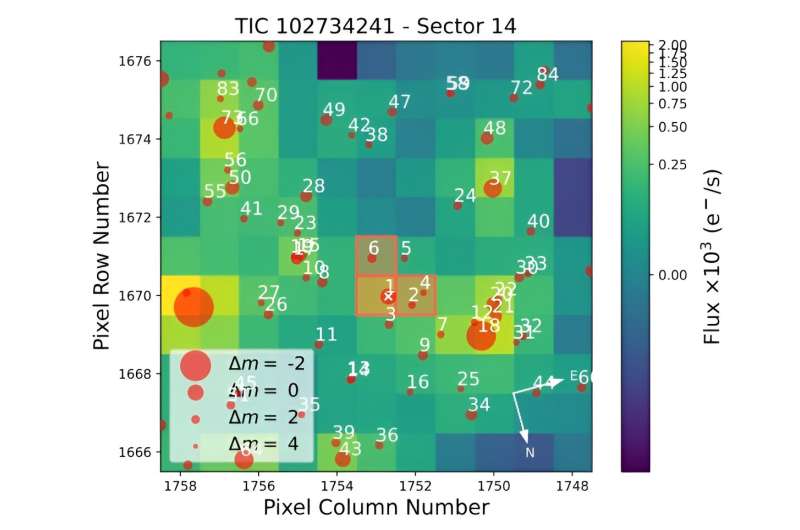August 8, 2024 report
This article has been reviewed according to Science X's editorial process and policies. Editors have highlighted the following attributes while ensuring the content's credibility:
fact-checked
preprint
trusted source
proofread
Astronomers discover two new super-Earths orbiting nearby stars

Using NASA's Transiting Exoplanet Survey Satellite (TESS), an international team of astronomers has detected two new super-Earth exoplanets orbiting nearby M-dwarf stars. The newfound exoplanets, designated TOI-6002 b and TOI-5713 b, are two times larger than our planet. The finding was reported in a paper published August 1 on the pre-print server arXiv.
TESS is conducting a survey of about 200,000 of the brightest stars near the sun with the aim of searching for transiting exoplanets. So far, it has identified over 7,200 candidate exoplanets (TESS Objects of Interest, or TOI), of which 543 have been confirmed.
The group of astronomers led by Mourad Ghachoui of the University of Liège in Belgium has confirmed another two planets monitored by TESS. They found that transit signals in the light curves of two M dwarfs known as TOI-6002 and TOI-5713, are of planetary nature.
"We used the 2-min-cadence TESS observations from four sectors for each target, ground-based photometry, high-angular resolution imaging, and spectroscopic observations to validate the planetary nature of the detected transit events. We jointly analyzed the transit light curves observed by TESS and ground-based facilities to characterize the planets," the researchers explained.
According to the study, TOI-6002 b has a radius of 1.65 Earth radii and is estimated to be nearly four times more massive than the Earth. The planet orbits its host star every 10.9 days, at a distance of some 0.06 AU. The equilibrium temperature of TOI-6002 b was calculated to be 321.1 K.
When it comes to TOI-5713 b, it is about 77% larger than the Earth and its mass is estimated to be about 4.3 Earth masses. The exoplanet has an orbital period of approximately 10.44 days and is separated from the parent star by 0.06 AU. It is estimated that the equilibrium temperature of TOI-5713 b is at a level of 347.2 K.
Based on the derived parameters, the authors of the paper classified the two newfound alien worlds as super-Earths. The so-called super-Earths are planets more massive than Earth but not exceeding the mass of Neptune. Although the term super-Earth refers only to the mass of the planet, it is also used by astronomers to describe planets bigger than Earth but smaller than the so-called mini-Neptunes (with a radius between two to four Earth radii).
The researchers added that the composition of the two planets is still uncertain, as they could be either rocky or water-rich worlds.
In concluding remarks, the astronomers underlined that both TOI-6002 b and TOI-5713 b are located just outside but near the inner edge of the habitable zone around their host stars. This makes them interesting targets for future studies aiming to explore the evolution of exoplanets from hot but potentially habitable to Venus-like worlds.
More information: M. Ghachoui et al, TESS discovery of two super-Earths orbiting the M-dwarf stars TOI-6002 and TOI-5713 near the radius valley, arXiv (2024). DOI: 10.48550/arxiv.2408.00709
Journal information: arXiv
© 2024 Science X Network



















